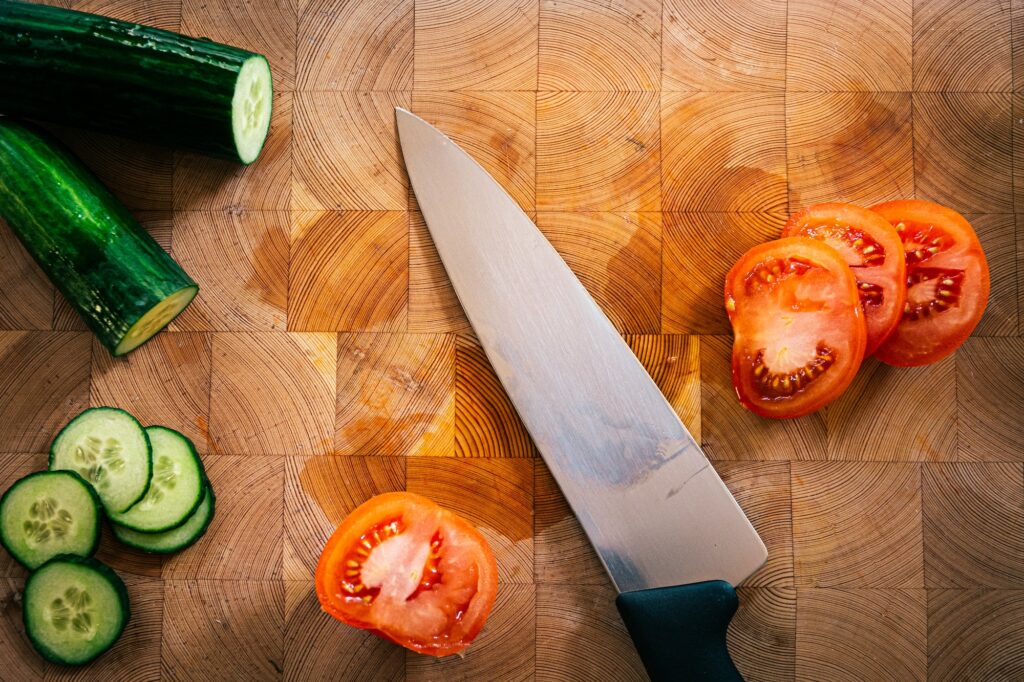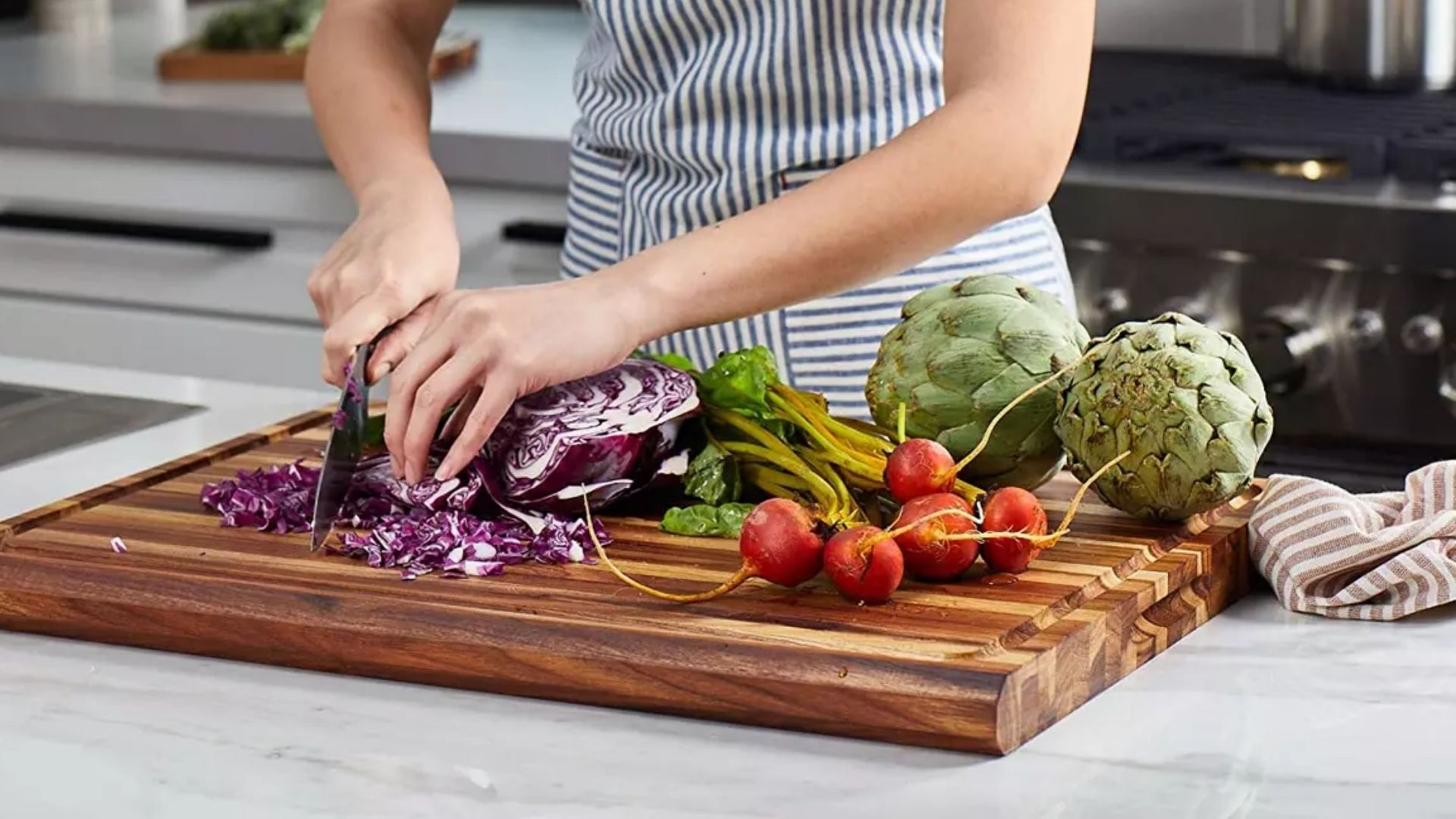How to Keep Wood Cutting Board from Cracking: Tremendous Tips for BBQ Enthusiasts
Written By James Morgan
Barbecue enthusiasts know that a high-quality wood cutting board is an indispensable tool for their culinary endeavors. Whether you're chopping juicy cuts of meat, slicing fresh vegetables, or preparing a host of other delicious ingredients, your wood cutting board plays a pivotal role. However, one frustrating issue many face is the tendency of wood cutting boards to crack over time. Today, we delve into the life-changing secrets and techniques on how to keep your wood cutting board from cracking.

Understanding the Nature of Wood
Wood, being an organic material, reacts to various elements like moisture, heat, and physical stress. This makes it important to adequately care for your board to maintain its longevity. Understanding how wood behaves is the first step in preventing your wood cutting board from cracking.
Moisture Management
One of the most significant factors that can cause a wood cutting board to crack is too much or too little moisture. To keep your board in tip-top shape, it's crucial to avoid letting it sit in water for prolonged periods. Equally, ensure it doesn't become overly dry.
After washing your cutting board, always dry it immediately. Never submerge it in water or leave it to air dry for too long. To achieve the perfect balance, regularly treat your cutting board with a food-safe mineral oil.

Oiling Your Cutting Board: A Shocking Secret You Cant Ignore
Oiling is perhaps the most crucial step in preventing your wood cutting board from cracking. Regularly applying oil helps maintain the right moisture content in the wood and creates a protective layer against external factors.
Choosing the Right Oil
Not all oils are created equal. For food safety and effectiveness, choose a food-grade mineral oil, beeswax, or a specialized cutting board oil that deeply penetrates the wood. Avoid cooking oils like olive or vegetable oil since they can turn rancid over time.
For a detailed guide on how to oil and maintain your cutting board, refer to this [comprehensive guide](https://www.cuttingboard.com/how-to-oil-and-maintain-a-cutting-board/).

Temperature The Big Culprit
Changes in temperature can cause wood to expand and contract, leading to cracking. Therefore, avoid exposing your wood cutting board to extreme temperatures.
Never put your wood cutting board in a dishwasher. The heat and prolonged exposure to water will lead to warping and cracking. Similarly, avoid placing hot pots or pans directly on your board. Instead, use a trivet or a heat-resistant surface for hot items.
Proper Storage Tips
Store your wood cutting board in a stable environment where the temperature and humidity levels are consistent. Avoid placing it near heat sources such as stoves or ovens.

Cutting and Cleaning Techniques
Believe it or not, the way you cut and clean your wood cutting board can significantly impact its lifespan. For example, using the wrong type of knife or cutting method can cause surface damage, while improper cleaning techniques can weaken the wood.
Correct Cutting Methods
Always use a sharp knife. Dull knives require more force to cut, which can lead to excessive pressure on the board and eventual cracking.
Try to vary the areas of the board on which you cut. This prevents certain spots from wearing out faster than others and maintains an even wear pattern.
Cleaning Wisdom
Although soap and water are your go-tos for cleaning, make sure you're not using harsh chemicals or overly abrasive scrubbers. Consider following a [step-by-step guide on how to clean and sanitize your cutting board](https://www.grilling4all.com/blogs/blog/how-to-clean-and-sanitize-cutting-board-step-by-step) for best results.
Lets Talk Edges and Joints
Often overlooked, the edges and joints of a cutting board can also be vulnerable points subject to cracking. Paying special attention to these areas can make a tremendous difference.
Using End Grain Boards
End grain boards, where the grain of the wood is perpendicular to the surface, are particularly resistant to knife marks and cracks. They allow the wood fibers to flex instead of split when cut, increasing the board's durability.
Glue Maintenance
If you notice any separation at the glued joints, addressing it immediately can prevent further damage. If you're a DIY enthusiast, this [guide on how to glue up a cutting board](https://www.grilling4all.com/blogs/blog/how-to-glue-up-a-cutting-board) provides useful tips.
FAQs
How often should I oil my wood cutting board?
You should aim to oil your wood cutting board at least once a month, or more if you use it frequently.
Can I use my wood cutting board for cutting raw meat?
It's recommended to use separate cutting boards for raw meat and other ingredients to avoid cross-contamination. For more detailed advice, check out this [guide on preventing cross-contamination](https://wordswithboards.com/blogs/stories/what-should-you-do-to-prevent-crosscontamination-when-using-cutting-boards).
What should I do if my cutting board already has cracks?
If your board already has minor cracks, you can sand them down and then treat the board with mineral oil to restore its integrity. For severe cracks, consider professional repair or replacement.
By following these tips, you can maintain the longevity and quality of your wood cutting board, ensuring it's always ready for your next barbecue feast. Dont forget to explore more expert advice and tips on [maintaining your barbecue tools](https://www.grilling4all.com/blogs/blog/)
As an Amazon Associate, I earn from qualifying purchases.



